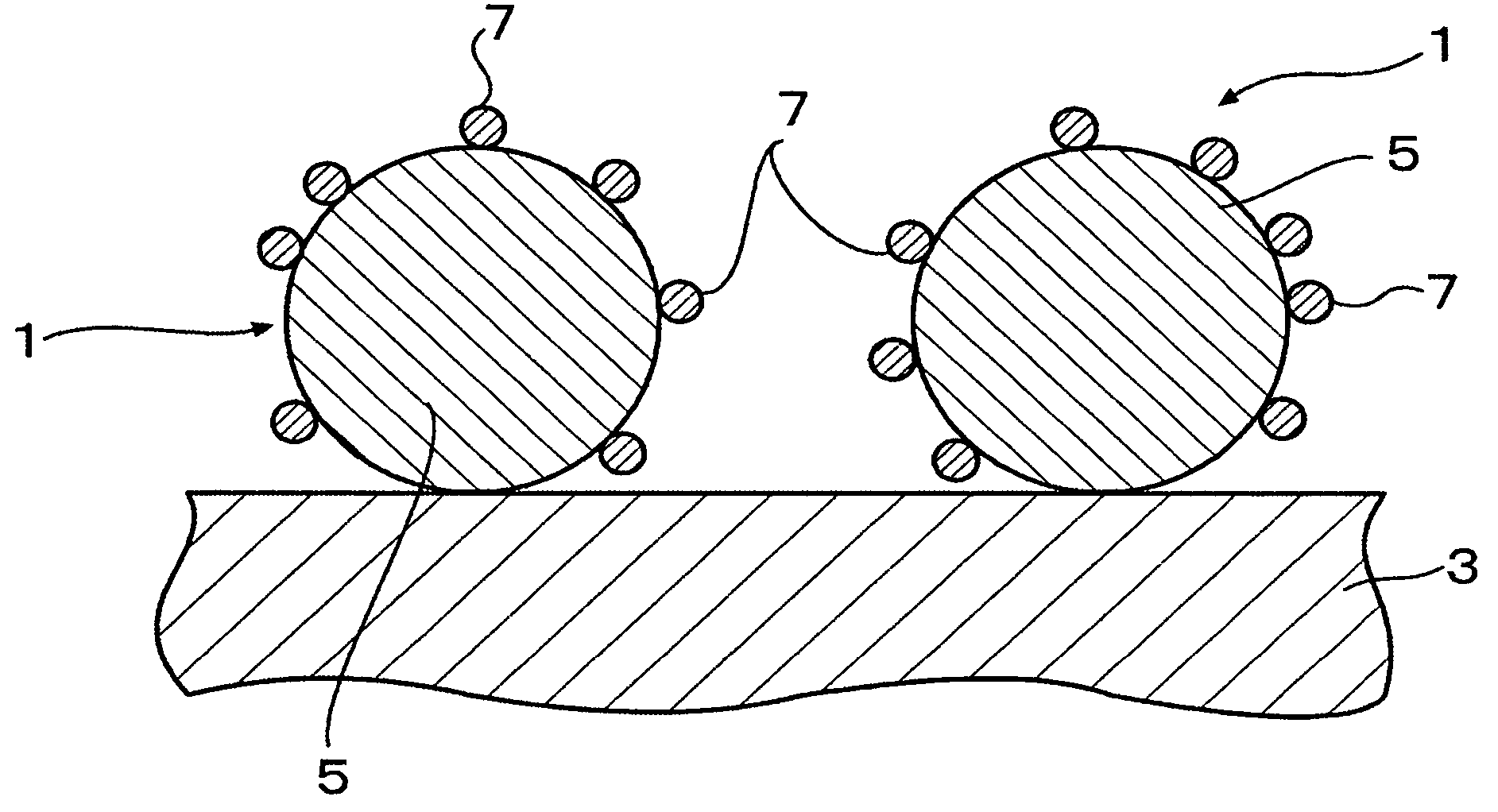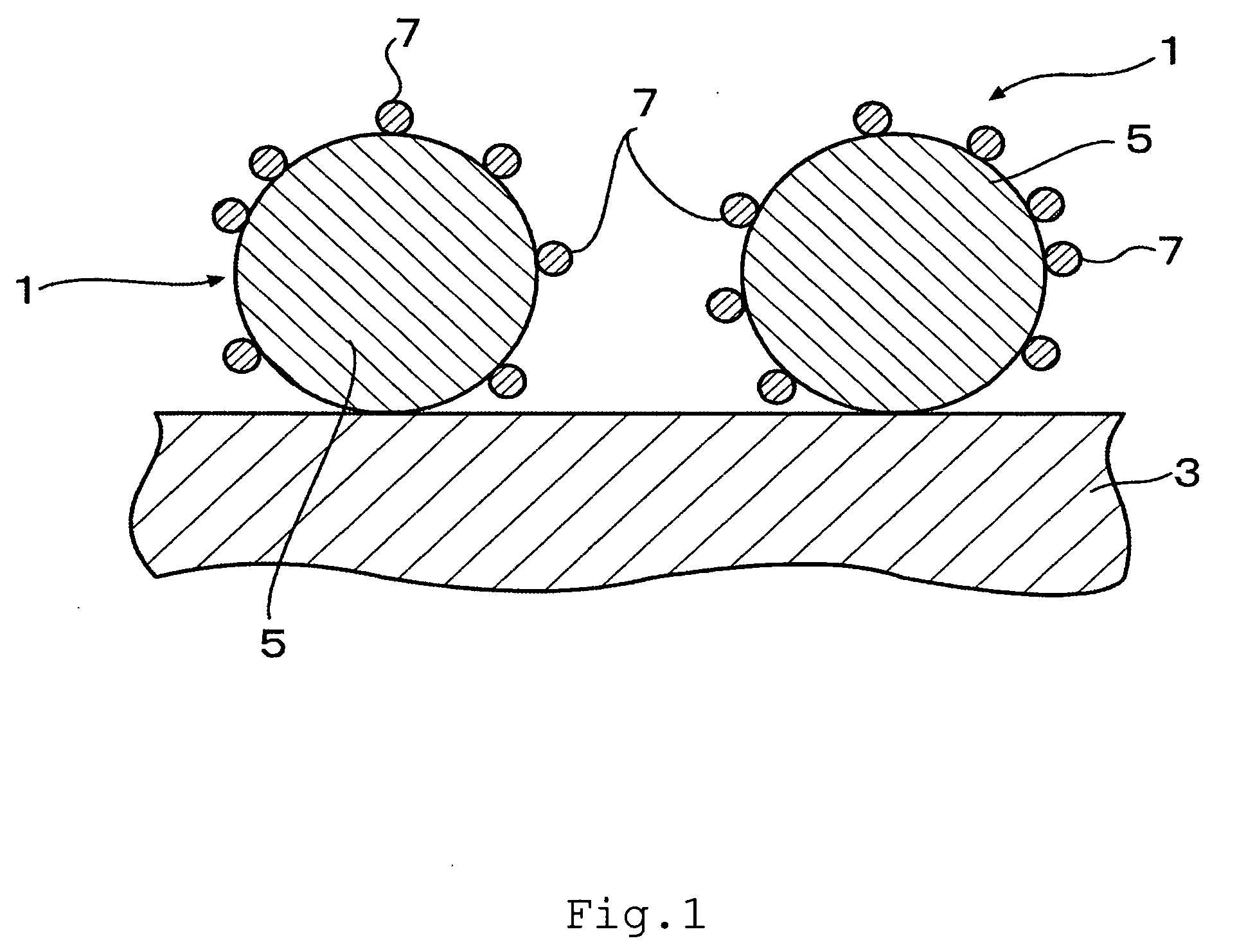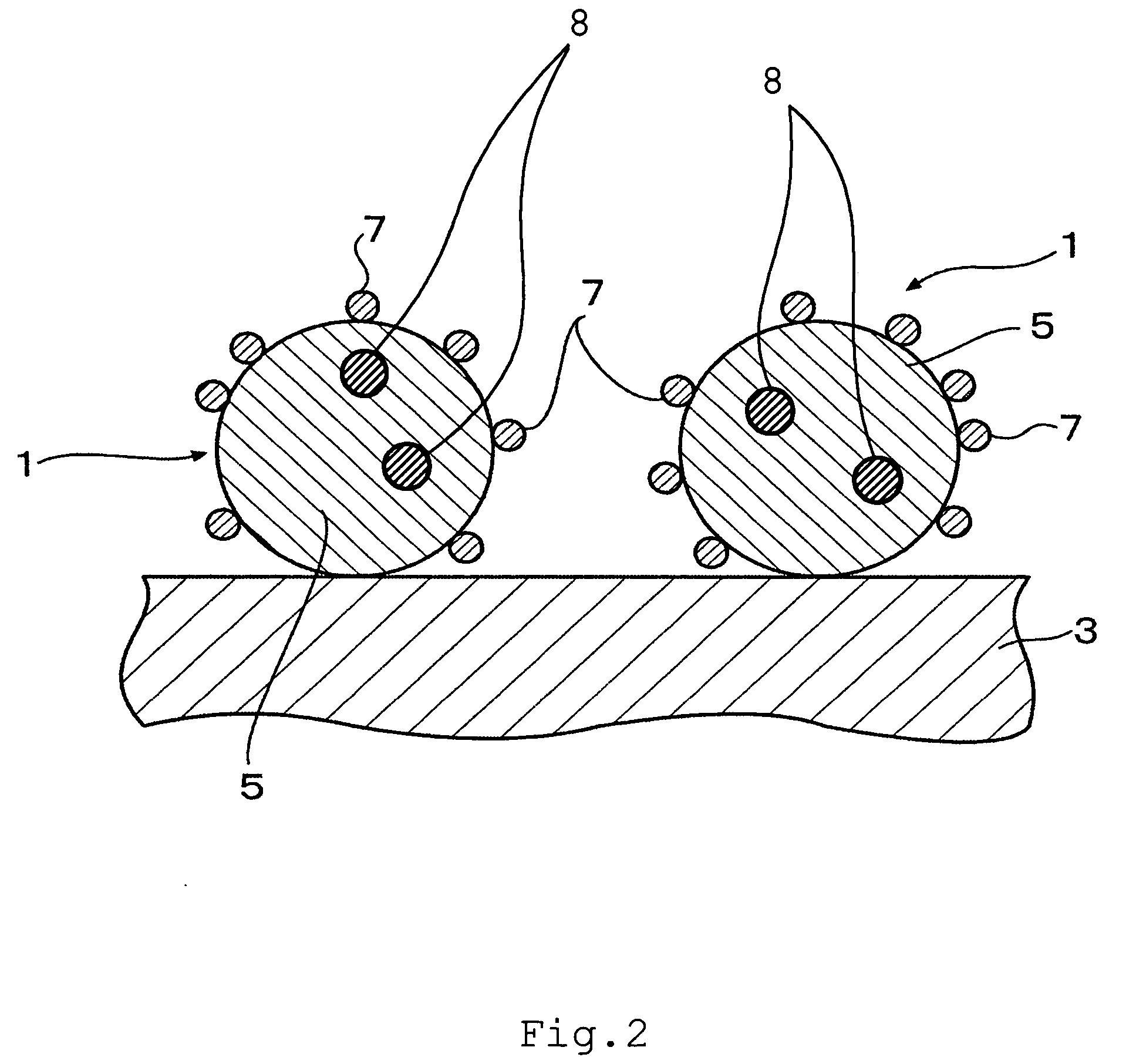Fuel cell and membrane electrode assembly
a technology of membrane electrodes and fuel cells, applied in the direction of active material electrodes, cell components, electrochemical generators, etc., can solve the problems of limited site for proper construction, depletion of energy resources such as oil, and environmental pollution, so as to improve catalytic activity and increase catalyst surface area
- Summary
- Abstract
- Description
- Claims
- Application Information
AI Technical Summary
Problems solved by technology
Method used
Image
Examples
example 1
[0063] Bis(acetylacetonato)platinum(II) of 1.69 mmol, tris(acetylacetonato) ruthenium(III) of 1.69 mmol, and sodium phosphinate of 0.338 mmol were dissolved into ethylene glycol of 300 ml. An ethylene glycol solution of 100 ml into which a carbon support of 0.5 g (Vulcan XC-72R available from E-TEK Inc., Somerset, N.J., with the specific surface area of 254 m2 / g) was dispersed was added thereto. A sulfuric acid solution was added, and the pH value of the solution was adjusted to 3 using a pH litmus paper. In a nitrogen gas atmosphere, the solution was stirred and refluxed for 4 hours at 200° C., thereby depositing Pt—Ru—P catalyst particulates on the carbon support. Subsequent filtration, washing, and drying gave a catalyst.
example 2
[0064] Bis(acetylacetonato)platinum(II) of 1.69 mmol, tris(acetylacetonato) ruthenium(III) of 1.69 mmol, and sodium dihydrogenphosphite of 0.338 mmol were dissolved into ethylene glycol of 300 ml. An ethylene glycol solution of 100 ml into which a carbon support of 0.5 g (Vulcan XC-72R with the specific surface area of 254 m2 / g) was dispersed was added thereto. A sulfuric acid solution was added, and the pH value of the solution was adjusted to 3 using a pH litmus paper. In a nitrogen gas atmosphere, the solution was stirred and refluxed for 4 hours at 200° C., thereby depositing Pt—Ru—P catalyst particulates on the carbon support. Subsequent filtration, washing, and drying gave a catalyst.
example 3
[0074] An alcohol solution of pure water and NAFION® dispersion solution, available from E.I. DuPont de Nemours and Company, Wilmington, Del., was added to the Pt—Ru—P catalyst deposited on the Vulcan XC-72R obtained in inventive example 1 and stirred, and then its viscosity was adjusted to create a catalyst ink. The catalyst ink was then applied onto TEFLON® sheet, available also from Dupont, in such a way that the amount of the Pt—Ru—P catalyst is 5 mg / cm2. After being dried, the TEFLON® sheet was peeled off, thereby creating a methanol electrode catalyst. Further, an alcohol solution of pure water and NAFION® dispersion solution was added to the Pt catalyst deposited on Ketjen EC, available from Ketjen Black International. Co., Tokyo, Japan, and stirred, and then its viscosity was adjusted to create a catalyst ink. The catalyst ink was then applied onto TEFLON® sheet in such a way that the amount of the Pt catalyst is 5 mg / cm2. After being dried, the TEFLON® sheet was peeled off,...
PUM
| Property | Measurement | Unit |
|---|---|---|
| particle diameter | aaaaa | aaaaa |
| diameter | aaaaa | aaaaa |
| specific surface area | aaaaa | aaaaa |
Abstract
Description
Claims
Application Information
 Login to view more
Login to view more - R&D Engineer
- R&D Manager
- IP Professional
- Industry Leading Data Capabilities
- Powerful AI technology
- Patent DNA Extraction
Browse by: Latest US Patents, China's latest patents, Technical Efficacy Thesaurus, Application Domain, Technology Topic.
© 2024 PatSnap. All rights reserved.Legal|Privacy policy|Modern Slavery Act Transparency Statement|Sitemap



